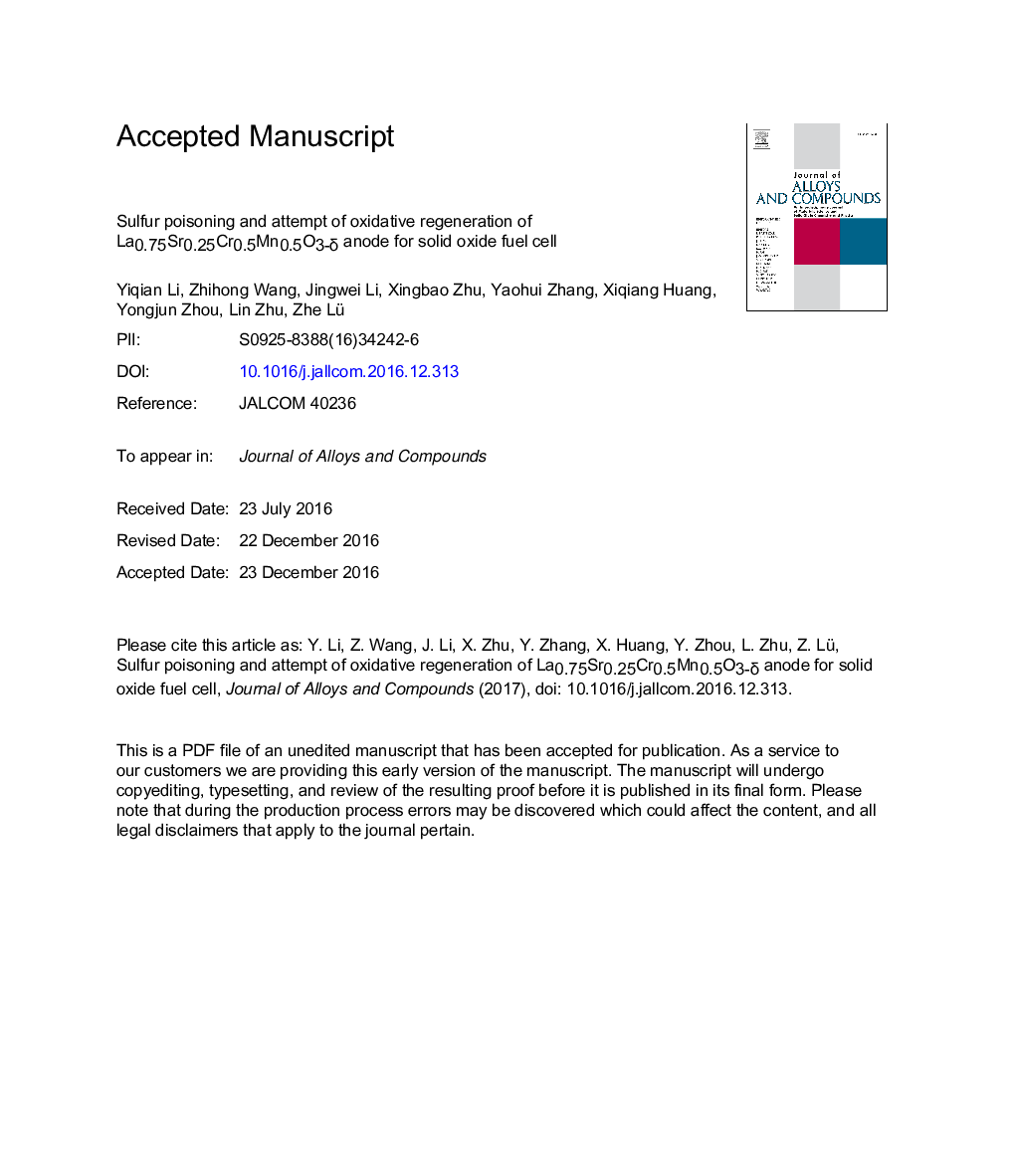| Article ID | Journal | Published Year | Pages | File Type |
|---|---|---|---|---|
| 5460865 | Journal of Alloys and Compounds | 2017 | 24 Pages |
Abstract
Sulfur poisoning and subsequent oxidative regeneration of La0.75Sr0.25Cr0.5Mn0.5O3âδ (LSCrM) anode by pure O2 were studied using a model solid oxide fuel cell with yttria-stabilized zirconia (YSZ) electrolyte. Utilization of H2 fuel containing 50 ppm (v) of H2S was found to result in increasing polarization resistance of LSCrM anode and degradation of overall cell performance, mainly due to absorption of sulfur and formation of metal sulfides. The electrochemical performance of the cell can be recovered after first two poisoning-oxidative regeneration cycles. Oxidative treatment made it possible to remove the absorbed sulfur and to oxidize metal sulfide. Progressing microstructure changes in LSCrM anode with increasing number of alternative poisoning-regeneration cycles lead however to irreversible degradation.
Related Topics
Physical Sciences and Engineering
Materials Science
Metals and Alloys
Authors
Yiqian Li, Zhihong Wang, Jingwei Li, Xingbao Zhu, Yaohui Zhang, Xiqiang Huang, Yongjun Zhou, Lin Zhu, Zhe Lü,
